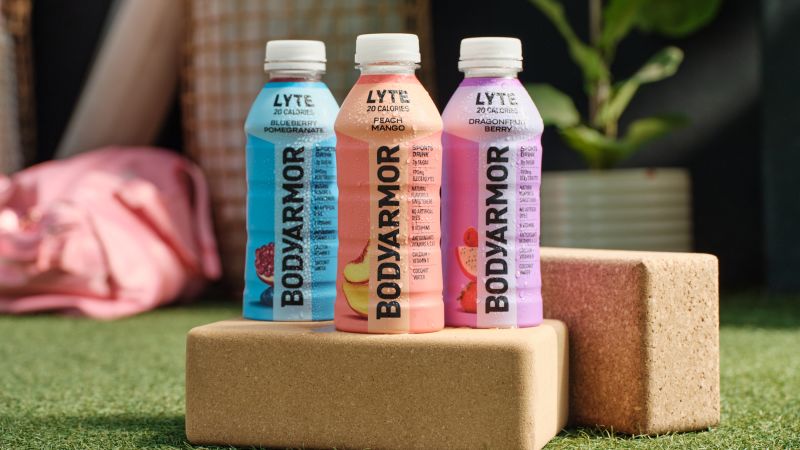The beverage industry has witnessed monumental changes over the years, particularly with the rise of health-oriented products. A significant example is Coca-Cola’s pivotal acquisition of BodyArmor in 2021, which was executed for a staggering $5.6 billion. Coca-Cola aimed to position BodyArmor as the leading global sports drink, directly competing against the established giant, Gatorade, which is owned by PepsiCo. This ambitious goal underscored Coca-Cola’s strategy to diversify its beverage portfolio and capture more market share in the lucrative sports drink segment.
Fast forward to 2024, and BodyArmor is still grappling to claim a stronger foothold in an already competitive market dominated by Gatorade and its sister brand, Powerade. Industry experts highlight several hurdles that BodyArmor faces, including intensified competition, unclear branding, and stagnating sales figures. The company’s struggles prompted Coca-Cola to take a notable $760 million write-down on the BodyArmor brand last year, indicating financial concerns surrounding its performance since the acquisition.
Howard Telford, a prominent figure in soft drinks research at Euromonitor, opines that BodyArmor seems to be “lost in the middle,” suggesting that the expectations set during its acquisition may not have been met. The brand’s recent announcement of a “rebirth,” which includes new packaging, a revised logo, and its most comprehensive advertising campaign to date, aims to rejuvenate interest. The campaign features high-profile athletes like NFL quarterback Joe Burrow and WNBA star Sabrina Ionescu, with plans to launch these ads during the NHL playoffs.
Tom Gargiulo, BodyArmor’s chief marketing officer, acknowledged that public awareness of the brand is a significant barrier. He emphasized that there is a vast opportunity for growth, suggesting that many consumers remain unaware of BodyArmor’s identity and offerings. Established in 2011, BodyArmor distinguished itself from other traditional sports drinks by presenting itself as a healthier option, incorporating ingredients like coconut water and marketing natural flavors and sweeteners.
The brand initially skyrocketed to prominence thanks to celebrity endorsements, particularly from the late Kobe Bryant, who acquired a 10% stake in BodyArmor in 2013. His involvement helped the brand gain traction amidst a cultural shift where consumers gradually moved away from sugary soft drinks, catching Coca-Cola’s attention. The beverage titan had initially taken a 15% stake in BodyArmor in 2018 before finalizing a full acquisition just a few years later.
However, the transition from an investment to a fully owned subsidiary has proven challenging. Coca-Cola’s CEO, James Quincey, reflected on some “hiccups” encountered while integrating BodyArmor within its larger system, particularly in synergy with its budget-friendly sports drink, Powerade. BodyArmor’s CEO, Federico Muyshondt, echoed this sentiment, acknowledging that while moving from investment to ownership has involved growing pains, it also serves as a learning experience.
Under Coca-Cola’s wing, BodyArmor has seen diversification within its product line, launching variants that include lower-calorie options and even alkaline water. Additionally, new products such as sugar-free beverages and rapid rehydration drinks have emerged under the BodyArmor brand, with the latter achieving impressive sales figures shortly after launch, thanks in part to Coca-Cola’s marketing and distribution support.
The sports drink category itself has undergone transformations in recent years, evolving from a narrow product range primarily catering to serious athletes to a millennial-friendly market filled with diverse competitors. As more brands enter the space, including products endorsed by sports icons and trendy influencers, the competitive landscape has shifted dramatically. Telford notes that younger consumers increasingly gravitate toward hydration options that they perceive as healthier, leading to many new market entrants.
Despite the competitive pressures pushing down the market shares of traditional brands like Gatorade and Powerade, BodyArmor has made strides, growing to nearly a 12% market share. However, this is still behind Gatorade’s significant hold at about 62% and Powerade’s 14.5%. Analysts suggest that reestablishing BodyArmor’s identity in relation to its competitors is essential for future growth, particularly amid changing consumer preferences and market dynamics.
Finally, Muyshondt remains optimistic about BodyArmor’s prospects, viewing increased competition as a positive indicator of a growing category rather than a threat. He asserts that the brand is clear about its ultimate goal: attaining the top position in the sports drink market. Only time will tell if these strategies and upcoming changes will enable BodyArmor to carve out a more prominent spot amongst its competitors.



